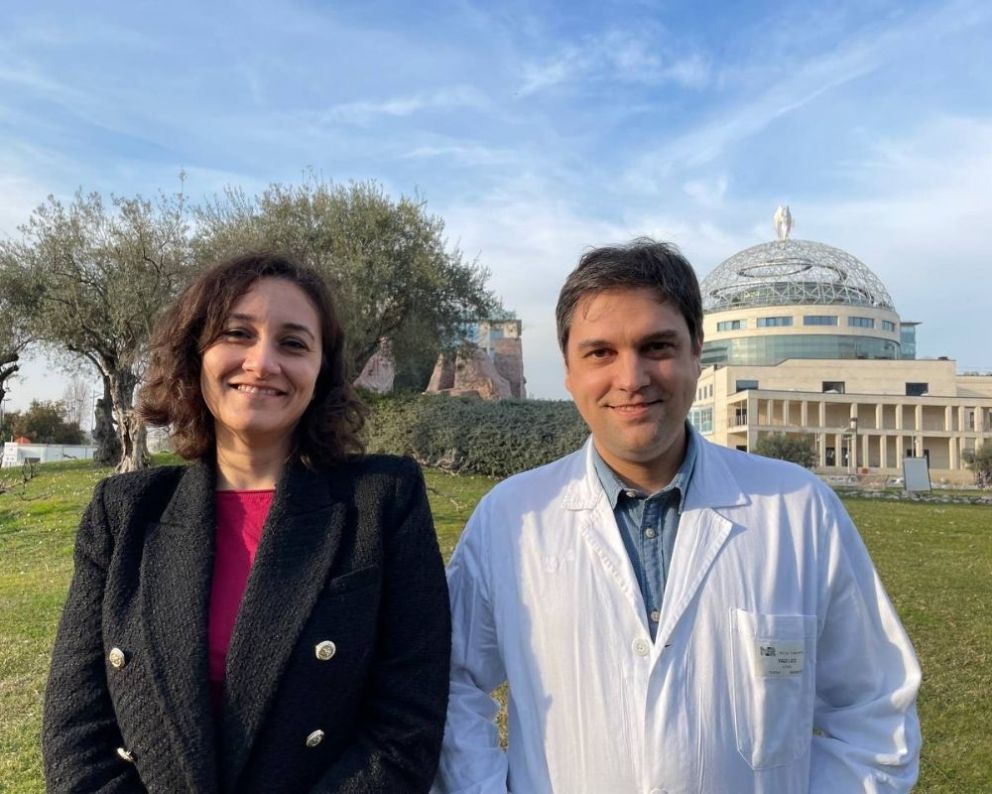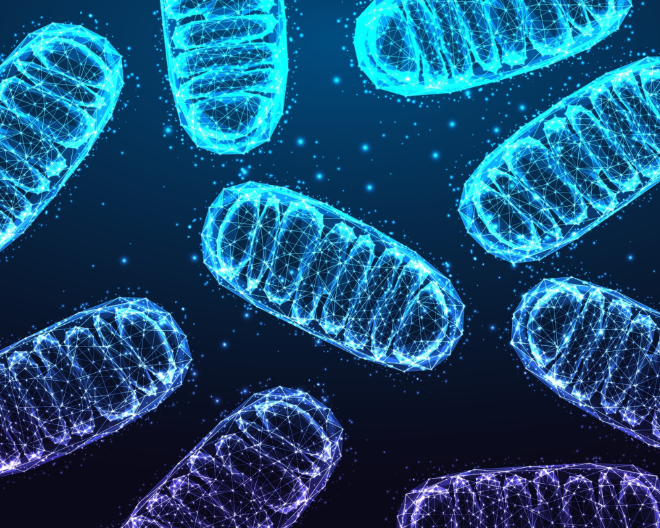Discovered a molecular "silencer" that makes leukemia invisible to the immune system

The collaboration between two groups of researchers from Ospedale San Raffaele in Milan has also demonstrated the effectiveness of an experimental drug in preclinical models. The discovery paves the way for new approaches in the treatment of post-transplantation relapses of acute myeloid leukemia
Nearly half of acute myeloid leukemia relapses after bone marrow transplantation occur because tumor cells escape the immune control mediated by the transplanted immune system. The reason behind this immune-evasion is not a mutation in their DNA, but a so-called epigenetic modification: the DNA sequence that encodes for HLA proteins – the proteins that make the tumor visible to donor lymphocytes – is temporary "folded" and hidden to the molecular machinery that is supposed to read it.
Researchers at San Raffaele have also discovered how to reverse the process, forcing leukemia cells to show their HLA proteins and thus making them vulnerable to transplantation again. To do so, they used an experimental drug already in advanced clinical trials for other therapeutic indications and therefore already tested for safety and tolerability. The approach – described in a study published today in the prestigious Cancer Discovery, a journal of the American Association for Cancer Research – has achieved excellent efficacy results in experimental models of the disease, both in vivo and in vitro, and paves the way to a rapid clinical translation.
The research was coordinated by Luca Vago – associate professor of Hematology at the Vita-Salute San Raffaele University and group leader of the Division of Immunology, Transplantation and Infectious Diseases of IRCCS Ospedale San Raffaele – and Raffaella di Micco – group leader of the San Raffaele Telethon Institute for Gene Therapy of Milan and a New York Stem Cell Foundation Robertson Investigator – and it was made possible also thanks to the support of the AIRC Foundation for Cancer Research and the Leukemia Research Foundation.
Acute myeloid leukemia: the challenge of relapses
Acute myeloid leukemia is an aggressive and fast-growing blood cancer that originates from bone marrow stem cells. It is an extremely severe disease that is more likely to affect men over 60, although it can also occur in children.
To date, the most effective therapy for many patients with acute myeloid leukemia is allogeneic bone marrow transplantation. The antitumor activity of the transplant is largely due to the partial incompatibility between the donor's immune system and the patient's cancer cells. In many transplant donor-recipient pairs the mutual incompatibility involves the presence, on the surface of the tumor cells, of a different variant of some proteins called HLAs. This diversity facilitates the work of donor lymphocytes in recognizing the tumor as a foreign element, to be attacked and eliminated.
"Unfortunately, however, in about half of the patients with acute myeloid leukemia undergoing bone marrow transplantation from a healthy donor, the tumor relapses because it is no longer recognizable by the transplanted lymphocytes: the HLA proteins normally present on the cell surface of leukemic cells have in fact been hidden to escape the immune system.
Studying these evasion mechanisms and finding effective strategies to thwart them is one of our research goals."
- explains Luca Vago.
The epigenetic mechanism that explains half of AML relapses
In a previous study, published in 2019 in Nature Medicine, the group directed by Luca Vago – in collaboration with Professors Fabio Ciceri and Chiara Bonini – described that in 40% of post-transplant relapses, the disappearance of HLA proteins cannot be explained by genetic mutations in the tumor DNA. In the three years following the discovery, the research team of prof. Vago joined forces with the group of Raffaella Di Micco, an expert in non-genetic modifications that regulate blood cells, to identify the precise epigenetic mechanism responsible for the disappearance of HLA proteins and the way to reverse it, making leukemia once again susceptible to the immune system.
Raffaella Di Micco, co-coordinator of the study published today in Cancer Discovery, says:
"Research increasingly needs to merge different skills and expertise, because only a multidisciplinary approach can reduce biological complexity and find effective answers to the clinical needs of patients.
Our work indeed originated from a seed grant issued by our institute to bring together basic and clinical researchers. Thanks to the use of the most innovative genomic and epigenomic technologies, and the collaboration with a team of bioinformaticians at San Raffaele, we have identified the protein complex responsible for hiding leukemia’s HLA proteins: a well-known gene-silencer called PRC2."
PRC2 works by "hiding" the portion of DNA that corresponds to a gene and thus making it impossible for the cell to synthesize the corresponding protein.
“In the case of relapsing leukemic cells, the portion of DNA hidden by PRC2 is precisely the one encoding HLA surface proteins. This is an effective survival strategy for the tumor after a transplant, because HLA proteins are the main target that transplanted T lymphocytes use to recognize and kill them.”
- adds Valentina Gambacorta, first author of the study, who worked in these three years among the two research groups of Vago and Di Micco.
An experimental drug potentially effective against relapses
The discovery would not have been possible without the close collaboration between Luca Vago's research laboratory and the Hematology and Marrow Transplant Unit directed by prof. Fabio Ciceri, in which Vago himself carries out his activity as a clinical hematologist.
Luca Vago explains:
“To discover the role of PRC2 we compared the blood samples collected longitudinally from our patients at two different times: at the first diagnosis of the disease and in the relapse phase after transplantation. Access to clinical samples also allowed us to successfully test, in vitro and in a mouse model of human disease, the efficacy of some PRC2 inhibitors, experimental drugs that could become the first potentially effective therapies against non-genetic AML relapses."
PRC2 inhibitors are already undergoing advanced clinical trials for other hematological and solid cancers, based on a different mechanism of action with respect to the new one identified by San Raffaele researchers and described today in Cancer Discovery. The fact that the safety and tolerability of these drugs has already been extensively tested in humans will help accelerate the launch of the first clinical trials of these inhibitors in patients with acute myeloid leukemia.
"The results of our study confirm once again the winning formula of a research hospital as Ospedale San Raffaele, in which clinical activities inform cutting-edge scientific research and viceversa.”
- conclude Raffaella Di Micco and Luca Vago.
You might be interested in

The microbiome as an ally against myeloma

Intrecci: a UniSR project for more inclusive and accessible cancer diagnosis

A New Approach to Enhance Immunotherapy in Multiple Myeloma
/resolutions/res-c660x528/Pensa_Aorta_Congresso_UniSR-(3).png)
